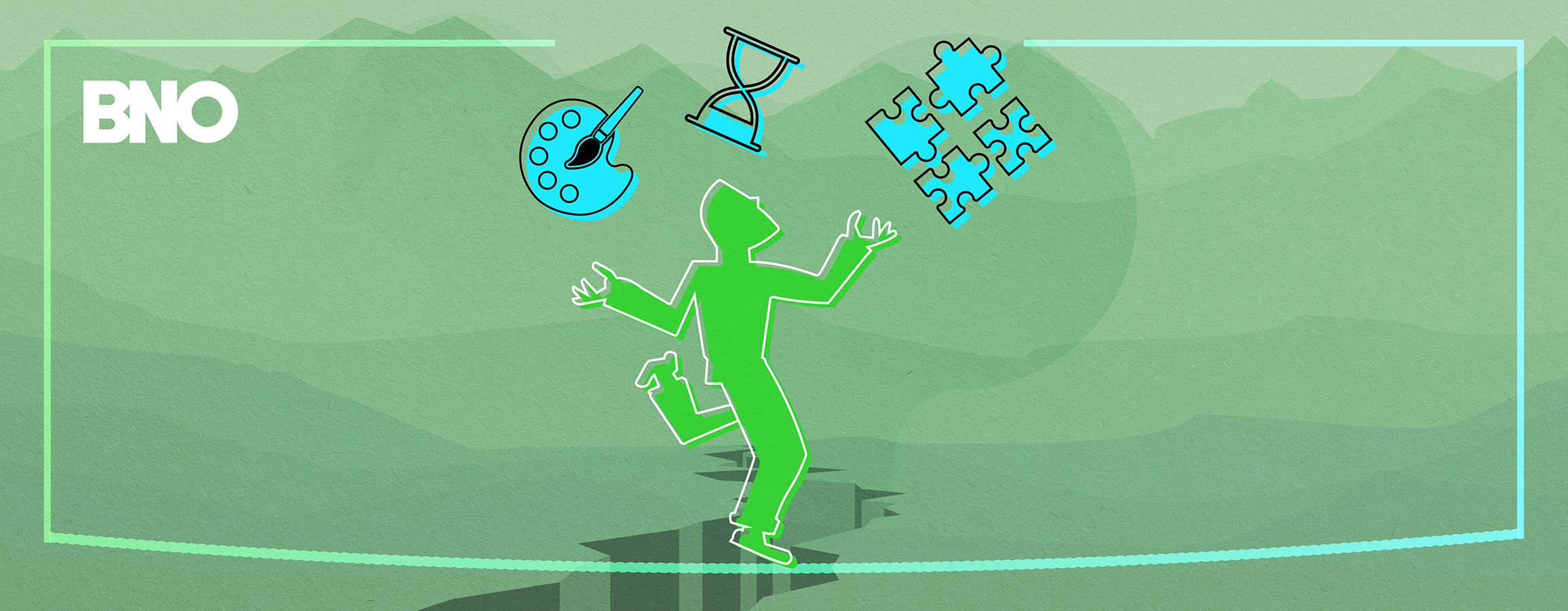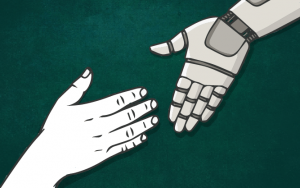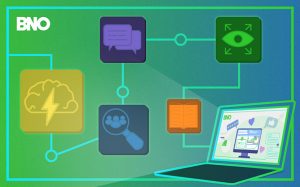Involve
The Art of Balancing Creativity and Deadlines

Where process meets inspiration: A modern agency perspective
Creativity thrives on time. It requires time to explore, to make mistakes, to try, fail, and try again. But in a world of deadlines, expectations, and agendas, time is often the one thing in short supply. At BNO, we don’t see these as constraints—we see them as creative challenges. Balancing bold ideas with real-world timelines is where we excel, delivering inspired, high-quality work without compromise.
The key to balancing inspiration and ideation with the realities of business starts well before the creative process even begins. During project scoping, agency subject matter experts play a critical role in shaping the vision—because what a client asks for and what they truly need can often be two different things. It’s our job to bridge that gap, ensuring the final product delivers real impact and exceeds expectations.
Navigating deadlines and creativity is an ongoing challenge. But with the right application of process and time management, standout work can be achieved without sacrificing efficiency.
Laying the groundwork
There is no one-size-fits-all approach to the creative process, because every project has unique needs. Of course, the ultimate trifecta is great creative delivered on time and within budget. Hitting all three of these is often about creative problem-solving, smart trade-offs, and knowing when to push and when to pivot.
If a project has a fixed deadline, say a market launch or major event, that timing dictates what’s possible. If the timeline is flexible, then creativity takes the lead, with project management mapping the vision to a workable schedule. What stays consistent, however, is approaching a project in key phases. Account managers and project managers first set the guardrails, managing expectations and feasibility. Then, the creative experts step in to shape ideas within those parameters.
This is where BNO’s ACXelerate™ process truly shines. By seamlessly blending design thinking, agile principles, and Kaizen methodology, ACXelerate™ creates the perfect environment for creativity to flourish within business constraints. The sprint-based framework doesn’t just manage deadlines—it transforms them into catalysts for innovation. Rather than viewing time limitations as obstacles, our teams use these structured sprints to focus creative energy, enabling rapid iteration and continuous improvement. The result? Clients receive not only incremental value throughout the project but also higher quality creative work that evolves through regular feedback and refinement. With self-organizing teams and daily communication at its core, ACXelerate™ ensures that creative excellence doesn’t come at the expense of efficiency—it’s enhanced by it.
Behind the brief: what clients don’t always consider
Clients come to agencies for expertise, but they also bring their own set of needs and constraints. Often, they may have internal deadlines or competing priorities that influence how quickly they need a project delivered. While clients may assume a project can be turned around in days or weeks, agencies know there are many logistical steps involved that can make the timeline more complex than it first appears. From their perspective, the process might seem as simple as briefing the team and approving the creative—but in many cases, that’s only half the job.
For certain projects, especially those with complex production elements, the work doesn’t stop after approval. There’s an entire additional phase that follows, one that can take weeks or even months to execute properly. That’s why good communication from the start is crucial—not just to outline timelines, but to ensure everyone has a clear understanding of the full scope of the work. By helping clients appreciate both the creative and logistical steps involved, we can avoid surprises and establish a smoother, more collaborative process.
When deadlines are rushed or expectations aren’t fully aligned, it can often lead to more work down the road. This is where the “measure twice, cut once” approach really comes into play—taking the time to work through each step thoughtfully can prevent the need for multiple revisions or, in some cases, starting over entirely. What may seem like a quick fix in the moment can sometimes take longer than if the full process had been given the necessary time from the outset.
Ultimately, clear and honest communication is key. Project managers should stay ahead of scheduling challenges by spotting them early and addressing them proactively. This includes collaborating with account managers to adjust timelines when necessary and keeping the client informed of any potential changes. This approach fosters a conversation where both the client’s needs and the agency’s process are considered and builds trust and reinforces a shared commitment to delivering the best results.
Retainer vs. time and materials contracts: which is right for you?
When it comes to contract models, agencies typically work with two primary structures: retainer-based contracts and time and materials (T&M). Each has its place, but they serve different purposes depending on the project scope and client needs.
T&M contracts are ideal for one-off, time-boxed projects with clearly defined deliverables. They offer flexibility, as clients only pay for the time and resources used, which can be a good fit for smaller or short-term initiatives. However, the lack of a long-term partnership can sometimes limit the agency’s ability to immerse itself fully in the brand, resulting in less continuity and potentially less creative innovation.
On the other hand, retainer contracts are better suited for clients who require ongoing, high-quality creative work and deeper agency involvement over time. A retainer allows the agency to develop a deeper understanding of the brand, its goals, and its target audience. This deeper knowledge enables the team to explore a wider range of creative options, experiment with new approaches, and iterate on ideas more effectively.
By having more time to refine concepts and strategies, an agency can consistently deliver more impactful, tailored creative work. Plus, clients often find better value in a retainer model, as it establishes a reliable and predictable workflow, ensuring that the agency is always available for the regular support that helps the brand thrive.
Keeping teams focused and flowing
Keeping an internal team aligned is just as important as managing client expectations. When we build a project timeline, we start with an ideal scenario—if this were the only thing on our plates, how long would it take? But that’s rarely the reality. Graphic designers, art directors, writers, and other creatives are almost always juggling multiple deadlines, which sometimes means shifting priorities, delegating work, or maybe even bringing in freelance help to keep things moving.
Prioritization is where things get tricky. When multiple projects are in play—often with competing deadlines—we have to make smart calls. For example, if a project has a flexible deadline, it’s probably going to take a backseat to something that’s time-sensitive. If a project is part of a larger, ongoing partnership or retainer, it may take priority to ensure we’re delivering the best possible experience. Meanwhile, smaller one-off projects with more leeway may be more likely to shift.
A real challenge that comes with managing a team within an agency is burnout. When it hits, even the most engaged employees can become disconnected, leading to lower productivity and a dip in work quality. Great managers stay ahead of it by recognizing the signs early and addressing them with curiosity—checking in, asking the right questions, and ensuring expectations are clear. Many times, burnout comes from miscommunication, not just workload. A graphic designer might be stressing over a project, thinking a fully polished design is due when, in reality, the client just needs a rough draft for early feedback. That kind of disconnect can lead to unnecessary stress and overtime when a simple clarification could have eased the pressure.
At BNO, we’ve intentionally created a culture where people feel comfortable speaking up about challenges before they escalate. We’ve fostered an environment where employees know they can ask for help, delegate tasks when needed, and make decisions with confidence. By empowering team members to say, “I need support” or “I don’t have the bandwidth right now,” we’ve not only helped individuals stay balanced but also ensured the team remains collaborative and effective. Our commitment to open communication and support has been key in minimizing burnout and maintaining a healthy, productive work environment.
The BNO difference
Balancing creativity and deadlines in an agency setting is never easy—but with the right expertise, it’s absolutely possible. Success isn’t just about meeting timelines; it’s about ensuring every project reaches its full potential without unnecessary roadblocks. That’s where an experienced agency makes the difference.
At BNO, we’ve mastered the art of delivering high-quality creative work on time and within budget—not by cutting corners, but by leveraging smart planning, seamless collaboration, and a deep understanding of what it takes to bring an idea from concept to completion. We know how to structure projects in a way that gives creativity the space to thrive while keeping momentum. Whether it’s a time-sensitive launch or an evolving long-term initiative, we bring the expertise to make sure every project lands exactly where it needs to—with impact, precision, and creative excellence.
Got a project in mind? Let’s talk.



